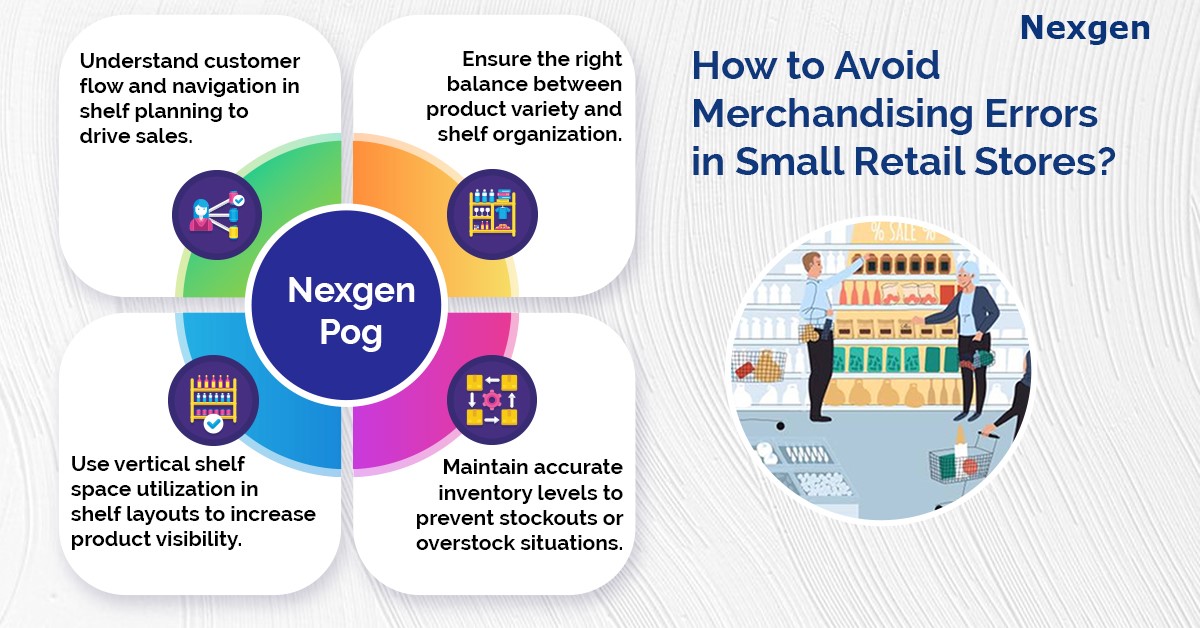Small businesses face numerous challenges in maintaining efficient and error-free merchandising operations. Merchandising errors can lead to inventory discrepancies, customer dissatisfaction, and financial losses. However, with careful planning and implementation of best practices, small retail stores can minimize the risk of these errors and create a positive shopping experience for their customers.
Managing merchandising effectively is crucial for success. Planogram services offer small businesses a powerful tool to optimize product placement and minimize merchandising errors. In this blog, we will explore how small retail stores can leverage planogram services to enhance operational efficiency and create a seamless shopping experience.

1. Customer flow and navigation in shelf planning.
How shoppers navigate throughout the store aisles is as important as the products on the shelves. Understanding customers flow is crucial in planogram design, since it refers to the path customers take through your store. This can impact their shopping experience and drive sales.
The first step in ensuring customer flow is to map it. This involves identifying and understanding how shoppers move through the store aisles. Are there any store areas where they stay longer? Or do they travel to certain specific paths than others? You can use heat maps generated from data to identify such patterns and the items they are looking for the most. Once a heat map is applied, the next step is integrating these insights into the planogram design. This will avoid common merchandising errors and make your shelves and displays feel natural and intuitive to the shopper. For instance, placing best-selling items along the most traveled paths can increase their visibility and sales. You can divide the store into zones based on product categories and place effective signages to help shoppers navigate the store effortlessly.
2. Ensure the right balance between product variety and shelf organization.
As a retailer, ensure you have the right balance between product variety and shelf organization in your stores. Overstocking or understocking shelves is a planogram error, which can result in missed sales opportunities and customer dissatisfaction.
Finding the right balance means retailers must identify customer patterns and their demand. It involves analyzing sales data to understand which items are in high demand and which are less. Using planogram reports, you can conduct regular reviews to adjust stock levels based on current sales trends and seasonal changes. For instance, during the winter, it makes sense to increase stock levels of certain items, such as jackets, sweaters, or glows, while decreasing the stock of other items. You can also display products in a visually appealing way to highlight the product variety. This enhances the shopper experience and optimizes sales and inventory management.
3. Vertical shelf space utilization in shelf planning.
In small retail stores, every inch counts, especially in shelf planning. A common error in merchandising is not utilizing the vertical shelf space. This can result in cramped shelf layouts and missed opportunities for product display.
The key to effective use of vertical shelf space lies in strategic shelf planning and display techniques. For example, if your store uses wall-mounted shelves to strategically arrange various skincare and cosmetics items, it not only increases product visibility but also enhances product selection. Also, consider the height of the shelves. Products should be within easy reach of the average shopper. You can regularly rotate items on vertical displays based on season, customer preference, demand, or market trends. This keeps the store looking fresh and encourages shoppers to explore various product aisles.
Overview of Nexgen Planogram Services
Nexgen offers store-specific planograms for clients that optimize sales and achieve category objectives. We create customized planograms for your business to ensure that these are better aligned with your goals and merchandising strategies. Our expertise in planogram automation helps us build planograms faster, better and consistently. Whether it is creating a planogram from scratch, or a typical reset, we have the knowledge, tools, and experience to get the job done for you.
Get Your Free Trial Now!